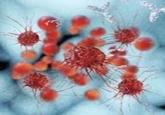According to multiple reports, NIH Director Francis Collins will replace senior management at the Mark O. Hatfield Clinical Research Center at the National Institutes of Health in Bethesda, Maryland, in response to a report from an independent working group that criticized this NIH facility for its fragmented governance and accountability, lack of funding transparency, inadequate facilities, and lack of compliance expertise. According to the report, these problems, if not addressed could “potentially impact patient safety and research outcomes.”
The 870,000-square-foot Hatfield Building has 200 inpatient beds and 82 day-hospital stations and sees 10,000 new research participants yearly, making it one of the largest research and clinical facilities in the world.
The task force was brought in to review procedures following a 2015 incident that found fungal contaminants in drugs produced by the pharmaceutical development section (PDS). Although no patients were harmed by the contaminants, the department was closed. “It became evident that the lapses in safety and compliance in the sterile manufacturing components of the pharmacy were likely symptomatic of more systemic issues in the structure and culture of the [Clinical Center] and NIH intramural clinical research,” According to the authors of the report.
The task force made multiple recommendations. Although its report did not call for new leadership, it stressed the importance of creating a new mission and values statement and enhancing clinical research leadership authority and responsibility. The report also called for creating a research support and compliance office, systems to monitor and enforce safety and quality standards, a hospital board, and a clinical practice committee. The report also tasked the NIH to identify and eliminate potential gaps among clinical services and to keep PDS closed.
VA/DoD to Help Lead New Cancer Initiative
“The regulatory deficiencies observed… are examples of sustained weaknesses in structure, facilities, practices and compliance,” the authors of the report concluded. However, “if the recommendations proposed herein, together with those already being implemented by NIH management, are implemented, the [NIH Intramural Research Program] can provide the essential degree of patient safety while continuing its record of extraordinary scientific accomplishment.”

